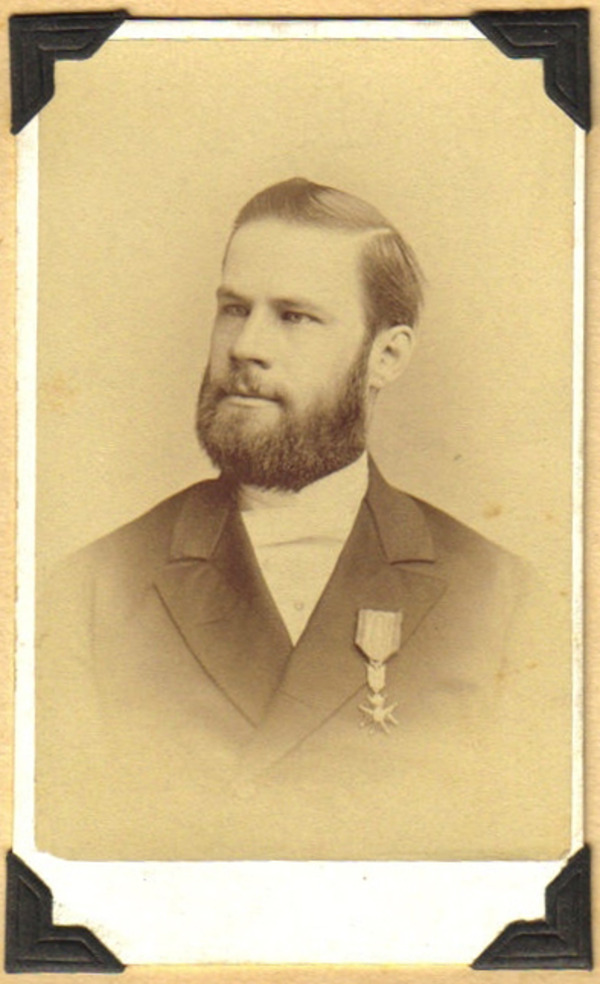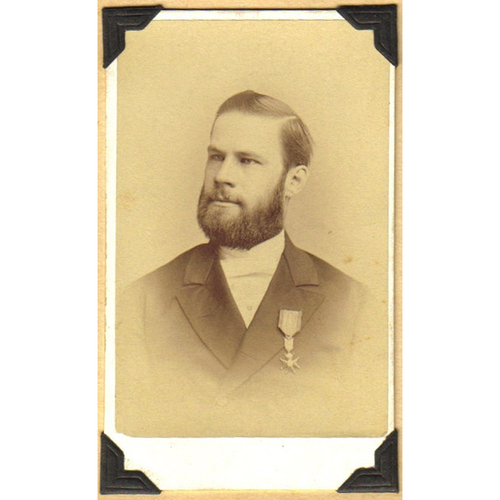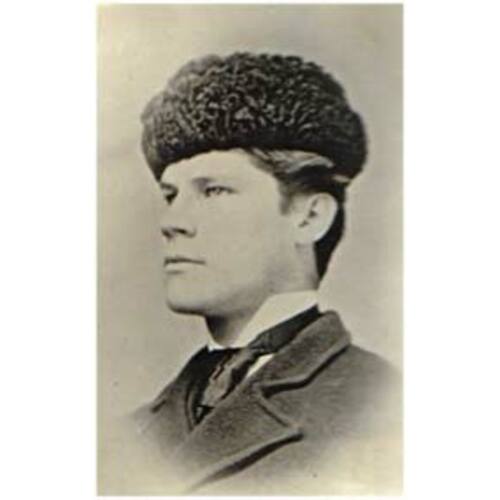
Source: Link
VALLÉE, CHARLES-AMÉDÉE, Papal Zouave, bank manager, and office holder; b. 17 Oct. 1850 in Saint-Roch parish at Quebec, son of Prudent Vallée, a master joiner, and Henriette Cazeau (Casault); brother of Arthur* and Louis-Prudent*; m. there 26 May 1874 Marie-Zoé Marcotte, and they had six children; d. 19 March 1924 in Saint-Gabriel-de-Brandon, Que.
Charles-Amédée Vallée studied at the Collège de Lévis from 1861 to 1864 and then at the Académie Commerciale de Québec. On 16 May 1868, as a youth of 17, he embarked for Italy with the second detachment of Papal Zouaves, who were setting off to defend the Papal States in the face of the threat posed by Giuseppe Garibaldi’s troops [see Édouard-André Barnard*]. He was promoted corporal, second class, on 26 March 1870 and quartermaster sergeant, second class, on 1 September. After Rome capitulated, he returned to Quebec in November. Pope Leo XIII would make him a knight of the Order of St Gregory the Great in recognition of his services. Vallée started on a career in the financial sector about 1872. After serving as a clerk in the Banque Nationale at Quebec, of which his father was a director, he became an accountant there. Around 1882 a promotion made him manager of the Montreal branch, a position he held until 1888. During the next two years he worked as a broker and was a member of the Montreal Stock Exchange.
In October 1890 the government of Honoré Mercier*, who was Vallée’s close friend, appointed him deputy warden of the common jail in Montreal, known as the Pied-du-Courant. On 18 May 1891 he succeeded to the governorship, his predecessor, Louis Payette, having died on 29 April. The members of the Board of Inspectors of Prisons and Asylums of the Province of Quebec commented enthusiastically on his nomination: “He is, without any doubt, an organizer of great ability, and his appointment is one of the best which have ever been made.”
Vallée would indeed demonstrate not only ability as an administrator, but also professionalism and open-mindedness towards new correctional theories, most of which came from Europe. In August 1891 the Montreal jail held 225 inmates and Vallée had a staff of 30 under his orders. He instituted practices that were very different from those of his predecessor. Upon his appointment he began a complete reorganization of the prison staff by dismissing nearly half of the employees in order to remedy problems of all kinds (guards who were often drunk, traffic between guards and prisoners in cigarettes, alcohol, and other items). In their 1891 report the inspectors stated that “the new Governor has transformed the whole building, for the better without doubt, and has introduced a new order of things, which gives to the establishment an entirely new character, and makes of an old tumbledown building, an appropriate local fort, and one which is very ingeniously laid out.”
For Vallée, prison was a place for punishing and reforming offenders. The prison governor was therefore no longer a head jailer who made sure that individuals were kept locked up, but rather the penal system’s administrator and “practical” thinker. Over the years Vallée produced numerous reports in which he put forward his views on such matters as the importance of solitary confinement in reforming a prisoner, the impossibility of applying this method in a common jail, the question of having prisoners work together at shoemaking, tailoring, carpentry, or sheet-metal work, and the distinction between accused and convicted detainees.
As governor of the Pied-du-Courant prison until 1913, and as a member of the commission charged with preparing and approving plans for the construction of a new common prison (since the Pied-du-Courant was overcrowded), Vallée left a real mark on the history of the Montreal penal system. He was chiefly responsible for the construction of Bordeaux Jail, considered at the time a model prison and ultra modern. To this end, he travelled to Europe and the United States a number of times to visit prisons and penitentiaries and to bring back plans and up-to-date technical, practical, and theoretical information. Designed by architect Jean-Omer Marchand* and built between 1907 and 1912, the building could hold nearly 1,000 inmates.
Charles-Amédée Vallée was governor of Bordeaux Jail from 1913 until he resigned in 1916. Shortly after the war, the provincial government appointed him to the Board of Censors of Moving Pictures. He retired in 1919 and went to live in Saint-Gabriel-de-Brandon, where he died five years later of influenza.
ANQ-M, P23. ANQ-Q, CE301-S22, 18 oct. 1850, 26 mai 1874; E17, dossier 1243 (1910) (versement 1960-01-036/271). Le Devoir, 20 mars 1924. Gazette (Montreal), 20 March 1924. La Presse, 20 mars 1924. Directories, Montreal, 1888–91; Quebec, 1872–83. René Hardy et Elio Lodolini, Les Zouaves pontificaux canadiens (Ottawa, 1976). Que., Parl., Sessional papers, report of the inspectors of prisons, asylums and public offices of the province of Quebec, 1891–1916.
Cite This Article
Marie J. Tremblay, “VALLÉE, CHARLES-AMÉDÉE,” in Dictionary of Canadian Biography, vol. 15, University of Toronto/Université Laval, 2003–, accessed December 31, 2025, https://www.biographi.ca/en/bio/vallee_charles_amedee_15E.html.
The citation above shows the format for footnotes and endnotes according to the Chicago manual of style (16th edition). Information to be used in other citation formats:
| Permalink: | https://www.biographi.ca/en/bio/vallee_charles_amedee_15E.html |
| Author of Article: | Marie J. Tremblay |
| Title of Article: | VALLÉE, CHARLES-AMÉDÉE |
| Publication Name: | Dictionary of Canadian Biography, vol. 15 |
| Publisher: | University of Toronto/Université Laval |
| Year of publication: | 2005 |
| Year of revision: | 2005 |
| Access Date: | December 31, 2025 |





